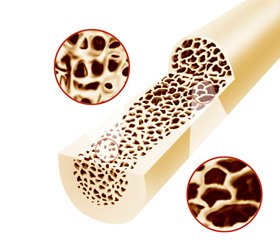Журнал «Боль. Суставы. Позвоночник» 2 (18) 2015
Вернуться к номеру
Efficacy of Pamidronate Therapy Treatment in Patients with Osteogenesis Imperfecta
Авторы: Zyma A., Kinchaya-Polishchuk T., Demyan Y., Zotya A. - Institute of Orthopedics and Traumatology, National Academy of Medical Sciences, Kiev, Ukraine
Рубрики: Ревматология, Травматология и ортопедия
Разделы: Медицинские форумы
Версия для печати
Статья опубликована на с. 102
Introduction. Nowadays, orthopedic scientific achievement in the treatment of osteogenesis imperfecta (OI) is not limited to surgery, but also have in their arsenal modern me–dical therapy, which involves the use of drugs pamidronic –acid (DPA) to correct structural and functional state of bone tissue (SFSBT). However, the treatment of these patients with drugs of pamidronic acid, will remain as unsolved issue regar–ding schemes, doses, combination with other antiosteoporo–tic drugs, the number of cycles of administration depending on the type of OI and extent of damage of SFSBT.
The aim of the study. To improve the results of orthopedic treatment in patients with OI by applying antiosteoporotic therapy that includes DPA.
Materials and methods. Orthopaedic treatment was conducted in 21 patients with OI, among them 13 — males and 8 — female. The mean age of patients was 9.4 ± 0.6. Distribution by type of OI (Sillence D., 1982), I — 10, III — 11. Antiosteoporotic therapy using the DPA, as an independent method was used in 10 patients and in the other 11 patients it was used along with the surgery. All patients received basic therapy of calcium supplements and active forms of vitamin D. DPA used in cycles, at a dose of 0.5–1.0 mg/kg for one cycle controlled by serum Ca level. Pharmacological preparation included 3–4 cycles separated by three month intervals. In type I of OI (level b–CrossLaps of 0.500 to 1.5 ng/ml, Z–score from –2.5 to –3.5) DPA was used in a dose of 0.5 mg/kg weight per cycle; in severe, with type III OI (b–CrossLaps from 1.5 to 3.5 ng/ml, Z–score of –3.5 and below) — in a dose of 1 mg/kg body weight per cycle. The effectiveness of treatment was assessed by the level of b–CrossLaps after 6 months and Z–score criterion of lumbar spine after a year of treatment.
Results. Clinically evaluated the results of 21 patients, paraclinically: Z–score — in 18 patients, b–CrossLaps in 21 patients. There was reduction of pain intensity in all patients after treatment. 18 patients (86 %) — no repeated pathological fractures; only 3 patients (14 %) during treatment had repeated pathological fractures — two fractured femur and one — tibia. Before treatment, 13 patients went independently, 8 lost this feature. Among the subgroup of operated 11 patients moved alone 4 (36 %), the other 7 (64 %) did not move. After a year of treatment alone 8 patients (72 %) moved alone; after 1.5 years — 9 (82 %) patients. In one patient among subgroup with nonoperative treatment who did not move after a year of the DPA therapy restored the function of walking. Observation period — 2–3 years after treatment.
In the overall group of patients there was noted increased Z–score by 1.13 (27 %), p = 0.022 and b–CrossLaps decreased by 0.46 (37 %), p = 0.021; in a subgroup of patients undergoing surgery — increased Z–score by 1.23, p = 0.05 and b–CrossLaps decreased by 0.26 ng/ml, p = 0.134; in the subgroup with nonoperative treatment — increased Z–score to 1.01, p = 0.2 and –b–CrossLaps decreased by 0.67, p = 0.05, indicating significant effectiveness of the proposed treatment.
Conclusion. The technique of complex treatment of orthopedic manifestations of OI, which includes drug therapy using the DPA as an independent method or in combination with surgical methods are appropriate and effective as evidenced by the positive dynamics of clinical and paraclinical parameters, regain patients gait function and support.

